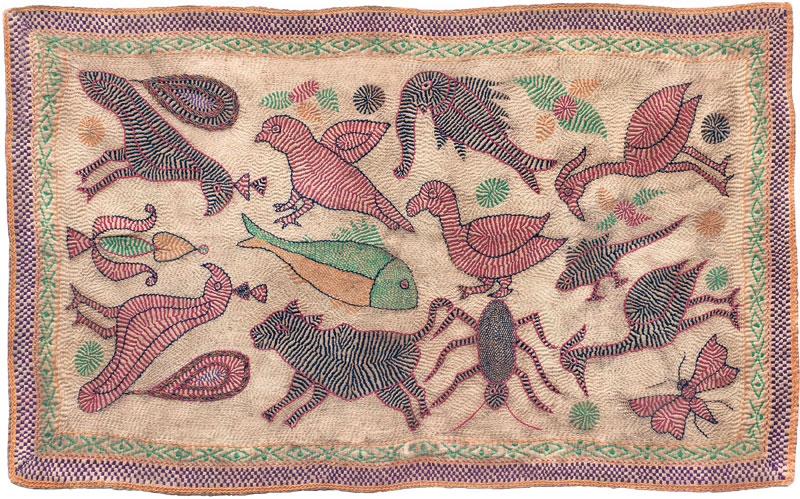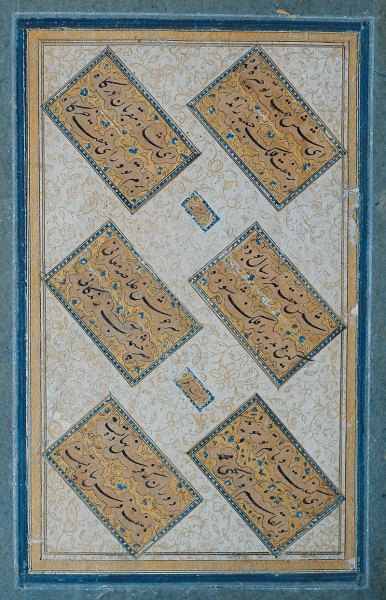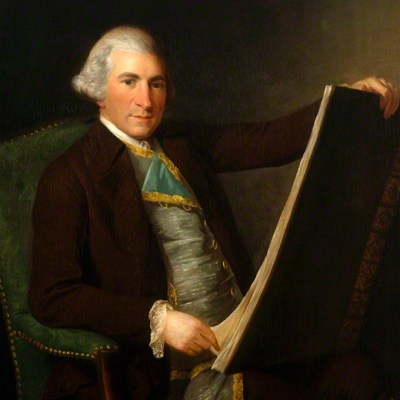‘I see the beauty. Nothing interrupts this, no period, no religion.’ This has been the guiding mantra for Jagdish Mittal who, since the age of 21, has amassed what is considered one of the finest collections of Indian art in the world. It encompasses all regions and media apart from stone; it ranges from pure folk to highest classical. Now, at the age of 91, he is still buying and shares his art and his knowledge more than ever. Not only does he welcome scholars, collectors, artists, and enthusiasts from all over the world to enjoy his art with him in his modest home in Hyderabad in south India, but this home doubles as one of India’s most important museums. For in 1976 Mr Mittal and his wife gave more than 2,000 pieces of Indian art dating from the 1st century BC to 1900 AD, often the best examples of their kind, to the nation in a trust called the Jagdish and Kamla Mittal Museum of Indian Art, Hyderabad. Eventually, it will have its own museum building.
We are sitting in the kernel of Mittal’s home, a room lined with shelves carrying books and small art objects, and furnished with a small desk and two chairs. Mittal sits cross-legged, straight-backed on a large low takht, or dais, covered in white cotton, which fills a third of the floor. Wearing a saffron kurta (long shirt), his smooth skin, sharp yet kind eyes and a halo of silver hair make him as handsome now as in photographs of him as a young man. A daughter – he has three adopted daughters – brings steaming tea and homemade biscuits. He quietly instructs his grandson Naveen Kumar, CEO of the museum, to fetch something. Moments later Kumar returns and places a bundle tied up in cloth beside his grandfather. I have visited Jagdish Mittal before and so know what is inside – exquisite paintings – but they won’t be revealed yet. I must be patient.
Kantha embroidered and quilted with birds and animals (late 19th century), India, West Bengal. This is the first work that Mittal bought, in 1946.

Mittal starts his story. He speaks modestly and without hesitation, with a perfect recall of dates, names, and the prices he paid for pieces. His voice is soft, sometimes so quiet it is difficult to hear. He often smiles and laughs as he shares a memory, his dark brown eyes twinkling. His tale is one of single-minded, lifelong devotion to his subject, decades of refining his acute aesthetic sense through – and this has been vital to the quality of his collection – being a practising artist, watching traditional craftsmen at work to understand their skills, seeing a vast amount of art, and publishing his findings. ‘I was not considered eccentric but some said “Why is this fool spending on art?”’ He laughs. ‘I gave it all my efforts, energy and work. Sometimes we did not have money for vegetables the next day.’
Mittal was born in the autumn of 1925 in Mussoorie, a hill station in the lower Himalayas north of Delhi. When he was six, his engineer father’s job took the family down to the northern plains, to Gorakhpur. There, he remembers clearly how his aesthetic sense was sparked into life: ‘On the way back from school I would stop to watch the local terracotta potters making elephants for temple offerings, and the goldsmiths, weavers, kite-makers.’ At school, he was so ‘fascinated’ by one illustration in a history textbook that he bought the book for one anna (a sixteenth of a rupee; currently, about 90 rupees buys one pound sterling); later he discovered the painting was from the great Mughal connoisseur Dara Shikoh’s album. ‘So, you see, my aesthetic was god-given. But if I had not used it, it would not have blossomed.’
His father’s move to Dehradun, just north of Delhi, opened new avenues. Mittal, by now 17, supplemented his academic studies by taking lessons in painting, which brought him into contact with artists, potters, and sculptors. He also started reading about Indian art history in a classic work published in 1917. ‘I bought Percy Brown’s Indian Painting from a wayside stall for one anna. It must have belonged to a British soldier. I looked at it every week, especially one picture by Nainsukh which was in the Indian Museum in Calcutta.’ He ponders for a moment how this book opened up his appreciation of Indian painting. ‘You can’t dissect a painting. I like the abstract quality of Indian painting, the placing of colours, the relation of spaces, how one colour plays off another. After this, I look at the subject. The date is not important. I don’t differentiate between periods, schools of painting or different media – textiles, bronzes, paintings. A good work of art is a good work of art.’ To illustrate this, he recalls visiting a Matisse exhibition in London in the 1960s with his friend, the British artist Howard Hodgkin, who also collected Indian art. ‘We both agreed to write down the ones we thought were the best. Afterwards, we found we had the same ones.’
In 1945, Mittal enrolled to study art at Kala Bhavana, the progressive visual arts institution founded by Rabindranath Tagore in 1919 at Shantiniketan in rural West Bengal. It gave him lifelong artist friends as well as his first taste of handling great historic art – his teachers introduced him to paintings collector Ajit Ghose in Calcutta, where ‘vibrant colours and exceptionally vigorous drawing moved me’ and to Rai Krishnadasa, founder of the Bharat Kala Bhavan collection of Indian art in Varanasi. As Mittal recalls in Jagdish Mittal: An Art Connoisseur (2014): ‘Seeing miniatures with these two connoisseurs, and [studying] original Pahari paintings [made at courts in the Himalayan foothills], aroused in me a rare sensation of sublime delight, a soul-stirring experience that made me restless for days afterwards. Thus began my lifelong quest to learn more about Indian painting, and to savour the aesthetic rush that it elicited in me.’ Here Mittal defines better than most the meaning of the Sanskrit word rasa, the all-enveloping emotional experience when fully appreciating a work of art.
A Maulavi and his Pupils (c. 1640–50), India, Himachal Pradesh, Chamb

The first piece he bought was a textile, in 1946. ‘There was a local mela, a festival. I spotted a fisherman who had sold his catch and was going home. His basket was covered with a kantha, an embroidered cloth. I liked it. I wanted to buy it.’ Mittal smiles, remembering how he behaved. ‘There was the collector in me already! I was very careful about not missing this chance. I followed him quietly until he was away from the mela, in case others wanted it. I asked him if he would sell it. He wanted to give it to me but I insisted on paying. He said three rupees. I only had a five-rupee note so I gave it to him and hurried off in case he asked for the piece back.’ It was a late 19th-century work, ‘the best kind of folk art, lots of freedom and no one interfering. It would probably have been made by his grandmother; kanthas are done by the women in the family.’ Mittal now has 15 of this quality, ‘some of the very finest, bought between 1946 and 2010’.
Nineteen forty-nine was a defining year for Mittal. After completing his studies at Shantiniketan, he saw the great exhibition ‘The Art of India and Pakistan’, which included sculptures, decorative arts, and paintings. Drawn from Indian museums and private owners, after its resounding success at London’s Royal Academy in 1947–48, it arrived in Delhi to be hung, incongruously, in Sir Edwin Lutyens’ New Delhi masterpiece, Government House (now renamed Rashtrapati Bhavan), where Lord Mountbatten had symbolically handed India’s independence to Jawaharlal Nehru on 15 August, 1947. Here, Mittal began to perceive the different characteristics of the vanishing art of Indian court painting. Many of the pieces in this exhibition formed the nucleus of the newly founded National Museum, which opened in 1949. Mittal’s mentor Rai Krishnadasa invited him to join discussions about which of these and other pieces to acquire. ‘I went with Rai Saheb to persuade people to donate or sell their art. He taught me diplomacy in buying art.’
The same year, Mittal took a three-month teaching post at Chamba, one of the former Pahari courts. He met local painters and learnt about their traditional techniques for making colours. From one of them he bought about 100 ancestral drawings ‘which would otherwise have been lost to posterity’. Then, on his last day before returning to Delhi, Mittal bought his first painting: a page from the Usha Aniruddha series made in 1780–90 at Chamba, which depicts the heroine Usha receiving a boon from the great god Shiva’s wife, Parvathi. ‘I heard of a Brahmin who had a painting to sell. He came to me at five o’clock in the morning just before my bus departed. He brought out the painting, named the price, five rupees. I paid. Later, I determined it was by one of the sons of the great great painter Nainsukh, the Guler artist Nikka.’ His first deal set the pattern for Mittal’s buying method. ‘I never bargain or give offers. The seller says the price and I pay. I ask for the last price; I never give a counter-offer. It suits me because the person selling knows if he gives me the wrong price he misses a chance.’
Round hookah base (1634), India, Deccan, Bidar.

Mittal distinguishes himself firmly from dealers. ‘I was from the start a collector of the best, never a buy-to-sell dealer. I bought a piece, then studied it. This was a new field; there was not much academic publication. If I bought a picture or object and others came with it, I would sell those right away to fund more buying.’ He calls them his ‘spares’ and keeps them on a shelf in his office. ‘If there was something I wanted to keep,’ he adds, ‘even if I could sell it for a hundred times the profit I didn’t sell.’ When he has visited museums around the world to see their Indian collections, he is ‘horrified by the amount of rubbish they are storing’. His exceptions to this include the Victoria and Albert Museum, British Museum, and British Library.
It was research at Chamba that led Mittal to write his first article, ‘Technique of Pahari Painting’ in 1952. It kicked off two decades of pioneering research, rigorous study, and a stream of publications on a wide range of subjects from murals and Mughal paintings, to inlaid bidri metalwork of the Deccan region of south India, where Hyderabad is located. He and his wife Kamla had settled there in 1953. They first visited when a gallery was exhibiting their own paintings, liked it, and stayed. ‘Hyderabad does not have extreme humidity like Bombay, Madras, and Calcutta do. Here I can work, study and write for ten months of the year, with the pieces out beside me.’ Funds were tight. ‘We constructed our own house so we had no rent.’ What Mittal calls ‘fans and other unnecessary luxuries’ came later, funds permitting.
Gaudi Ragini of Shri Raga (from a Ragamala series; c. 1760), India, Rajasthan, Kota

Hyderabad proved the ideal base as their passion for collecting intensified. ‘I had a network across the subcontinent of contacts, dealers, collectors, and people who knew what I was doing. They contacted me by letter and messages; there was no phone, let alone email. Some dealers were illiterate and used the village letter-writer. At first, we sold our paintings to buy. Kamla never bothered about jewellery. I don’t remember we disagreed on any purchase.’ In newly independent India, there were astounding riches to be scooped up. ‘I was in the right place at the right time.’ Princely families and artists descended from court painters were disposing of their collections. He gives an example. ‘In 1968, a small dealer in Jaipur had about 800 paintings from the Isarda royal family. They included 30 from a Ragamala series. I bought four. If I’d had the money I’d have bought them all.’
At last Mittal feels it is time to reward my patience. The bundle beside him is opened, and more bundles are brought. Several hours pass as he selects one piece after another, teaching me how I can better appreciate pieces seen on past visits and in shows and publications. ‘Here is a Jain manuscript. The story of Indian painting begins here, with powerful abstraction.’ Then: ‘This is an early Malwa painting from Central India, really the early Rajasthan style. I love the vitality. It leads to the early Kotah-Bundi school.’ He takes out a favourite painting from that school, a bold composition of the monkey-god Hanuman in a banana grove, humming, made in 1760–70. ‘Hanuman retreats to a secluded place where he can hum in praise of Rama. You can almost hear him. It’s the only example of this iconography I know of.’ After a while, Mittal switches to folk metalwork – what he calls ‘a break to refresh us’. He chooses a 15th-century deity from Kullu in the Punjab hills. ‘Look at this, I bought it for 100 rupees. It’s the best. I bought my first ones in 1955.’ Later, he moves to drawings and a new bundle. ‘Now, this is totally different, a drawing of Layla and Majnun. See how fine the stippling is, and how the complex composition leads the eye to the central couple.’
Hanuman Seated in a Banana Grove Humming a Song (1760–70), India, Rajasthan, Bindi

The picture prompts a digression about the role of faith in Mittal’s life. Since he lives in a land of many faiths and owns so much art that has been created for devotional use, Mittal has a clear philosophy. ‘I think faith is important in self-discipline. I don’t believe in sitting with swamijis; you should do something with your life. If you believe in integrity, if you live for yourself and for others, if this collection gives me and others pleasure, then that’s a good goal for life.’ His museum fulfils his aim: each piece is fully documented, the whole collection will be published (there are eight volumes so far), and the loan policy is generous. Mittal has more to say about the role of faith. ‘I think self-confidence in your own faith is an inspiring force. You should go and be useful with it, and keep an open mind. For me, it doesn’t matter if the work of art is Islamic, Hindu, or Jain. I have great Islamic calligraphy by about 15 of the world’s best calligraphers. I bought it entirely on aesthetic merit, my only rating.’ He picks out a panel of calligraphy made at the court of Bijapur in the Deccan around 1620 and signed ‘Khalil Badshah Kalam’.
The art historian John Seyller, who has studied with Mittal for 30 years, considers him to be that rare person, a rasika, ‘one who savours fully the formal beauty, poetical flavour and technique’ of a piece of art. This is perhaps why Mittal can say he has never made a mistake in a purchase. For him this is a simple fact free of any arrogance. His decisions to buy are often spontaneous. ‘That you have to learn. That’s a trick. I won’t tell you it!’
Panel of calligraphy in nastaliq script (c. 1620–25), signed ‘Khalil Padshahi-i-Qalam’, India, Deccan, Bijapur

From the November issue of Apollo. Preview and subscribe here.



